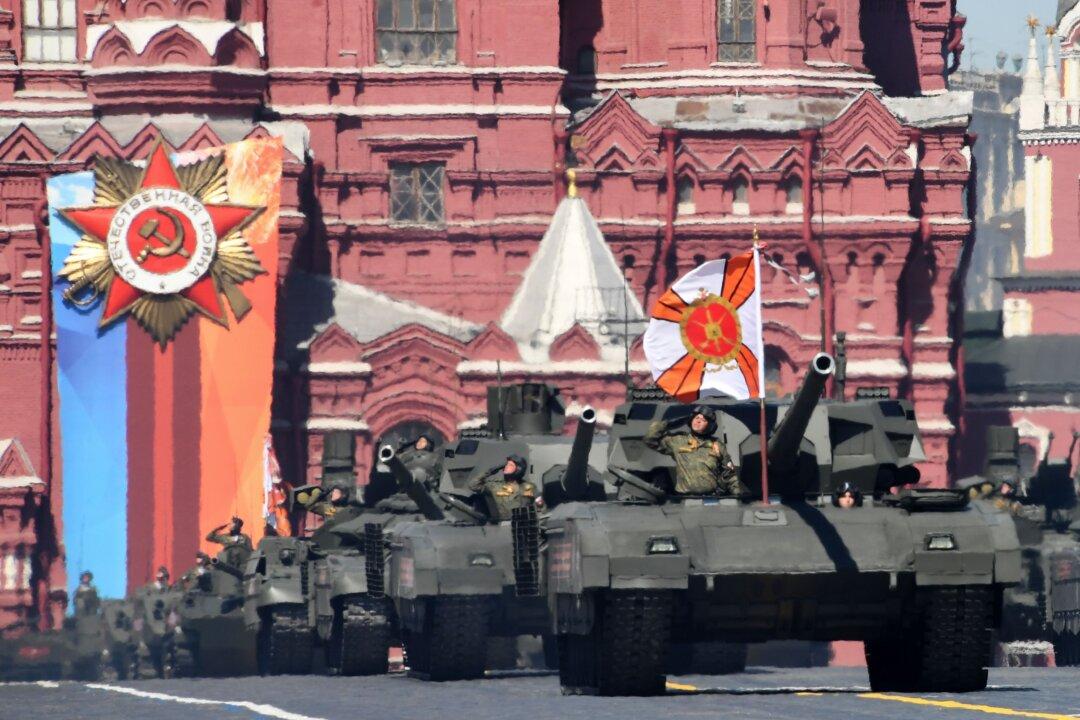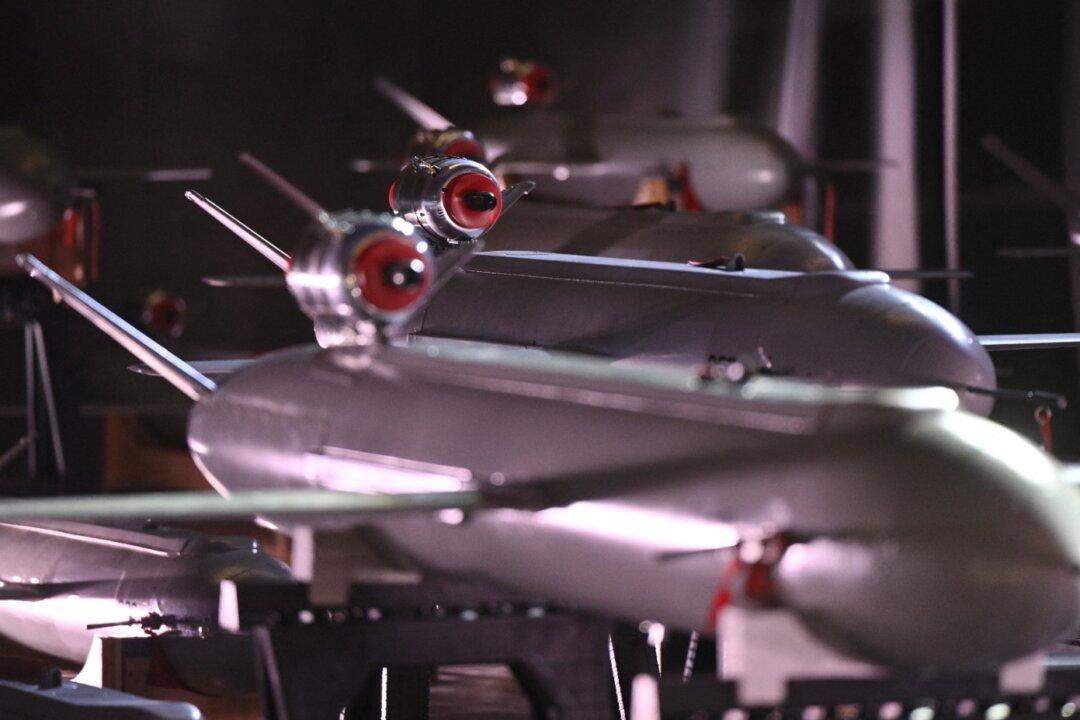Once celebrated as the pinnacle of Russian military innovation, the T-14 Armata tank has failed to live up to its expectations in the Ukraine conflict. Initially lauded as a forward leap in armored warfare technology, the Armata’s absence from the battlefield has sparked skepticism about Russia’s readiness and the practical deployment of its most sophisticated military hardware.
On March 4, Sergey Chemezov, the CEO of Rostec, the state corporation responsible for Russia’s arms manufacturing, indicated that the deployment of the Armata tank in Ukraine is improbable due to its prohibitive costs.
Financial Hurdles of Deployment
The T-14 Armata boasts several innovative features, including an unmanned turret and an enhanced crew protection design. Yet, its actual combat effectiveness and contribution to modern warfare remain speculative, with no confirmed deployment in Ukraine to date.The Russian government’s preference for the older but tested T-90 tank underscores a strategic pivot towards cost efficiency and reliability over the unproven advantages of the Armata. This decision reflects the challenges faced by the Russian military in reconciling high aspirations with the practical limitations imposed by economic constraints and the realities of contemporary combat.
Further undermining the credibility of Russia’s claims about the T-14 Armata’s superiority are parallels drawn with the Sukhoi Su-57 fighter jet, another high-profile military project yet to demonstrate its operational capabilities in Ukraine.
The reluctance to risk these advanced assets suggests a possible concern within the Russian military hierarchy about the potential reputational damage that could result from their loss or underperformance in the field. Western intelligence views this cautious approach as indicative of the Kremlin’s apprehension about the implications of exposing its premier military technologies to the rigors of actual combat.
British Intelligence Challenges Russian Claims
Yet, a British Ministry of Defence intelligence update from March 5 casts doubt on this plan, suggesting that the deployment of T-14 tanks to any combat unit is highly unlikely. This assessment lends weight to the speculation that concerns over the potential loss of these highly touted tanks—and the subsequent reputational damage—might deter their use in Ukraine.The limited number of T-14 tanks, while technologically advanced, cannot fulfill the extensive needs of battlefield engagements, necessitating reliance on other, more abundantly produced tank models.
This British intelligence viewpoint starkly contrasts with persistent assertions by Russian state media that the T-14 has seen action in Ukraine. Despite such claims, the possibility of the T-14’s involvement—whether in a limited role or through indirect engagement such as long-distance firing—remains speculative at best. Kyiv has echoed this skepticism, denying any indications of Armata tank participation in combat, a stance that aligns with the British analysis.

The T-14 Armata’s situation mirrors that of the Su-57 “Felon,” Russia’s acclaimed fifth-generation fighter jet. Delivered to the Russian Air Force in 2020, the Su-57 was also expected to significantly impact the conflict in Ukraine. However, similar to the T-14, the Su-57’s presence in the theater of war has been minimal and shrouded in uncertainty.

Skepticism on the Battlefield: Reality Behind the Hype
The UK Ministry of Defence’s 2023 analysis highlights strategic caution in Russia’s deployment decisions regarding the Su-57 in the Ukraine conflict. This caution stems from a desire to avoid losses that could tarnish its reputation, dampen export prospects, and risk the exposure of sensitive technologies.Moscow’s hesitance to deploy the Su-57 more extensively suggests a possible lack of confidence in its stealth capabilities, amid concerns not only about the potential capture of advanced technology by NATO but also about revealing the true capabilities of Russia’s most sophisticated fighter jet. This stance reflects a broader skepticism regarding the operational effectiveness of Russia’s heralded military assets, which often fall short of their publicized potential.
Similarly, the T-14 Armata tank, despite being marketed as the world’s most advanced main battle tank, faces doubts about its combat effectiveness and reliability. British intelligence updates have indicated a lack of trust in the T-14 among Russian military commanders in Ukraine, suggesting low expectations for its performance. Even Sergey Chemezov, head of Rostec, has implied a preference for investing in more cost-effective tank options, underscoring a disparity between the Armata’s promotional hype and the Kremlin’s confidence in its battlefield utility.
Ambition Versus Reality in Modern Warfare
Introduced during the May 2015 Red Square parade, the T-14 Armata boasts a design that includes an unmanned turret and places the crew in a protected capsule, distinct from the ammunition storage and automatic loader. Its design, aimed at reducing crew exposure to enemy fire, represents a significant evolution in tank technology. Featuring a 125 mm smoothbore main gun, remote-controlled armaments, advanced sensors, and defense systems, the Armata has been celebrated in Russian media as a leap forward in armored warfare.However, the disparity between these technological advancements and the tank’s actual deployment underscores a critical gap between Russia’s military ambitions and the pragmatic challenges of modern warfare, highlighting a cautious approach to revealing the true state of its latest military innovations.
The saga of the T-14 Armata tank encapsulates the chasm between ambitious military innovation and the pragmatic realities of warfare. The tank, amidst a whirlwind of anticipation, faced public embarrassment in 2015 during a Victory Day parade rehearsal.
A T-14 stalled on Red Square, a moment that not only challenged its heralded capabilities but also raised questions about its reliability. Officially explained away as a demonstration of combat evacuation procedures, this incident nonetheless cast a shadow over the Armata’s debut, with Uralvagonzavod officials quickly distancing the tank’s performance from the mishap, asserting it was under the military’s purview during the rehearsal.
Beyond the Tank: Russia’s Military Capability in Question
The ongoing conflict in Ukraine has further exposed the limitations and vulnerabilities of Russian military hardware. According to the Ukrainian Ministry of Defense, Russia has sustained heavy losses since the onset of the full-scale invasion in February 2022, with over 6,700 tanks reported as lost.While these figures are yet to be independently verified, they align with Western assessments of considerable Russian materiel losses. Such attrition speaks to the broader challenges faced by Russia in sustaining its military campaign under the weight of Western sanctions, which have undermined Moscow’s ability to replace lost equipment and maintain a robust offensive posture.
This degradation of Russian military capabilities presents tactical opportunities for Ukrainian forces. By bolstering defensive positions, disrupting supply lines, and strategically leveraging Western support, Ukraine can enhance its resilience against Russian advances. The anticipated increase in Western aid by 2024 could play a pivotal role in shaping the conflict’s trajectory, offering Ukraine the means to fortify its defenses and possibly shift the balance of power on the ground.
The narrative surrounding the T-14 Armata, from its troubled debut to its absence in key conflicts, underscores a recurring theme in modern warfare: the gap between technological aspiration and operational effectiveness. As the war in Ukraine progresses, the fortunes of both nations will likely be influenced not just by the capabilities of their respective arsenals but also by their strategic adaptability and the willingness of the international community to support their efforts.








